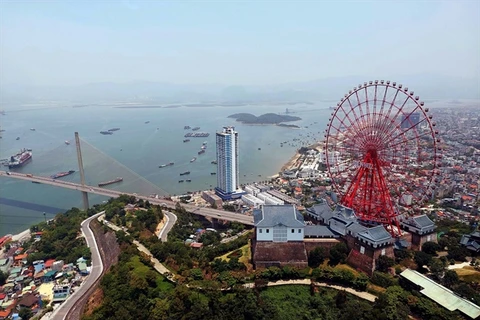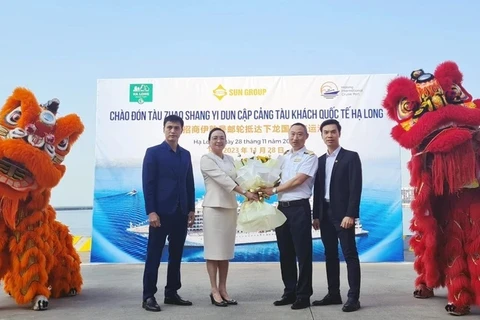 A delegation of the Chinese People's Political Consultative Conference (CPPCC) visits Quang Ninh Museum in the northern border province of Quang Ninh.(Photo: VNA)
A delegation of the Chinese People's Political Consultative Conference (CPPCC) visits Quang Ninh Museum in the northern border province of Quang Ninh.(Photo: VNA) The Chinese delegation expressed their surprise at the beauty of the bay, and their impressions on the unique architecture of the museum, as well as precious objects and documents on display.
The trip is expected to contribute to strengthening friendship and exchanges between the two sides, consolidating cooperation in all fields, especially tourism, and pushing ahead with the implementation of high-level common perceptions, thus fostering the Vietnam-China relations in a stable, healthy and sustainable manner in the time ahead.
The formation of Ha Long Bay dates back over 500 million years and the limestone that is found in the bay began forming around 340 million years ago. Over time, the bay has gone through countless changes resulting in its today’s magnificent natural landscape. Its core area, which has been recognised by UNESCO as a World Natural Heritage, is 434sq.km and comprises 775 limestone islands and islets.
The Quang Ninh Museum was opened to the public in October 2013. It was designed by Spanish architect Salvador Perez Arroyo who got his inspiration from coal – the province’s signature mineral.
The museum is famous for being covered in 14,000 square metres of tempered glass, which reflects its surroundings and Ha Long Bay./.
VNA























